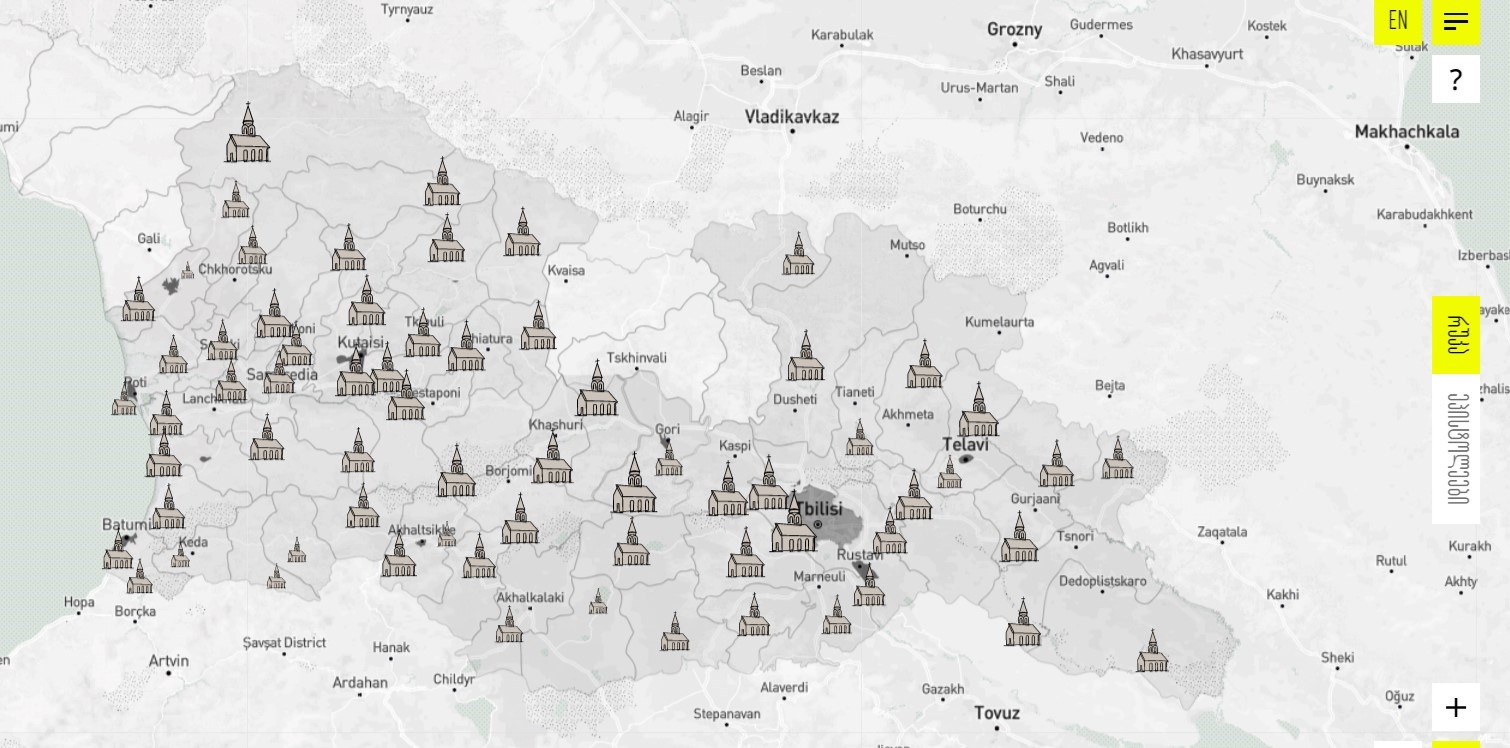
Territoriality of the Georgian Orthodox Church
Territoriality of the Georgian Orthodox Church www.toc.ge is Indigo’s project led by Dr. Tornike Metreveli (PhD in Sociology). The project was created in 2021 with the financial support from the University of St. Gallen. This database describes churches and monasteries in the country’s territory, lists the immovable property owned by the Georgian Orthodox Church, and thematically categorizes the epistles of the Catholicos-Patriarch of Georgia. Given the limited access to information, the data do not cover the occupied territories of Abkhazia and South Ossetia.
Churches and Monasteries
This project is the first in Georgia to have inventoried the churches and monasteries in the territory of the country. The data encompass 3,407 structures built from the 5th century to 2021, both operating and functionless churches or sites of cultural heritage. Buildings where no divine services are held or held only on great feasts, are listed as functionless in the database.
At the project’s outset, we requested information from the Patriarchate of Georgia, though it turned out that there was no centralized database, explaining why we used Google Maps to identify churches and monasteries. The collected data were verified with municipal representatives, local clerics, and others, via telephone communication. A total of 1,335 individuals provided us with information on churches in 3,633 villages. Information about 88 churches in Tbilisi and Kutaisi was collected on the ground. Information about the churches and monasteries in Batumi was provided to us by the local diocese, while data on the buildings in Sighnaghi, Mtskheta, Tianeti, and Dusheti Municipalities was offered by local city halls.
Consequently, we came into possession of information about churches missing from Google Maps. The received information was checked against the database of the National Agency for Cultural Heritage Preservation that lists churches treated as monuments of cultural heritage and contains dates of their construction. Given our limited resources, it proved impossible to visit every village and inventory every monument on the ground, while Google Map does not offer pictures of all of them, the reason why some structures may be missing. If you have any information about churches and monasteries missing from the map, please contact us at info@indigo.com.ge.
Immovable Property
Information about the immovable property owned by the Patriarchate of Georgia relies on official data retrieved from the Public Registry. Legally, property rights must be registered with the Public Registry. As a starting point of reference, we used The Patriarchate’s Capital, an initiative published by Indigo in 2017, also relying on data from the Public Registry and bringing together categorized information on lands owned by the Patriarchate prior to 2017. The information from this database was rechecked to identify possible changes of ownership since 2017. To identify immovable properties registered after 2017, we analyzed applications filed by the Patriarchate with the Public Registry, with cadaster codes of relevant territories subsequently defined. Using these codes, we requested documentation from the Public Registry to confirm property rights. Information about forests transferred to be owned by the Patriarchate relies on the relevant decrees by the President of Georgia. The database lists 1,556 parcels of land owned by the Patriarchate.
Demographic Data
Our demographic data were retrieved from the website of the National Statistics Office of Georgia which covers the results of the latest census of 2014.
Patriarch’s Epistles
The map’s narrative section thematically categorizes the epistles of Catholicos-Patriarch Ilia II of the Orthodox Christian Church of Georgia, studying his every epistle since his enthronement in 1978 until 2021 as published on the website of the Patriarchate of Georgia and the Orthodox Christian website www.orthodoxy.ge.
After the texts were processed, 10 topics most frequently addressed by the Patriarch were identified. Based on inductive and deductive approaches, thematic categories were defined, with categories identified in processing added to predefined themes. Next, the content analysis came into play to identify both latent and manifested meanings. A standard unit for analysis was defined as one paragraph (division by paragraph was in order to the texts incorporating several categories).



